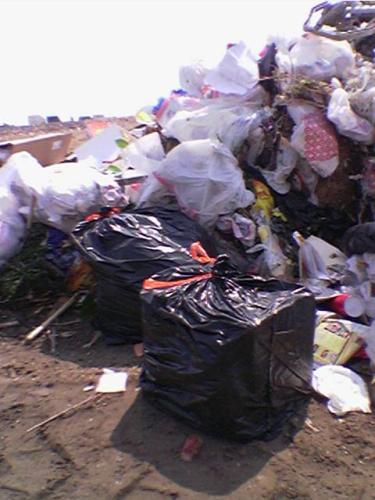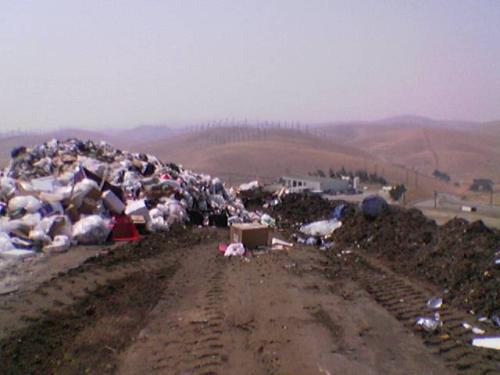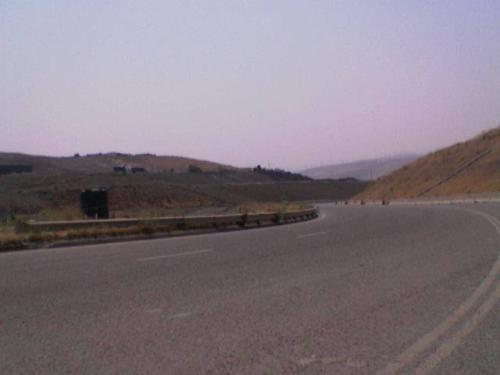The Dump
It's been quite an ordeal disposing our small box of asbestos tiles. (Remember them?) After we boxed them up, I'd put them in the back of the car, intending to stop at an appropriate disposal facility on the way to or from work one day... or so I thought.
The Tri-Cities Landfill (Fremont, CA) is just off the freeway and right along my commuting route. I stopped by one day, thinking it'd be a 5-minute stop-and-drop kind of operation. No dice. They don't take asbestos. They recommended I try another landfill close by.
My next stop was the Zanker Road Landfill (San Jose, CA). It wasn't too far out of my way. A sign at the entry gave me hope: "Hazardous Materials Accepted." I pulled up to the check-in booth and asked about my box. No luck. Evidently asbestos is "Extremely Hazardous Waste," which is not accepted. They gave me a flyer for the Household Hazardous Waste program in San Jose and suggested that I call the hotline listed therein.
The hotline folks were helpful. Yes, they accept asbestos once per month by appointment. Would I like to sign up for a time slot? This Saturday? Sure, I would. Where do you live? Alameda. Alameda? Alameda. Sorry, you'll have to dispose of your waste within your own county.
I was starting to get frustrated. Ayse suggested I call our local trash folks, Alameda County Industries. They told me that they could handle our tiles -- they had a hazardous materials acceptance station within the city limits which was open weekday mornings.
The next morning, I drove to their Blanding Avenue facility. The staff were very friendly, and very sorry that they couldn't take my box. After a significant volley of yelling amongst the employees, the consensus opinion was that I should call Altamont. "What, the city?" I asked. "No, the landfill."
I called. "You take asbestos?" "Yes." "Are you sure?" "Uh, yes. We're the only facility in the area which will take it. How much you got?" "Just a file box full of tiles." "No problem, bring it up." I got directions and drove the 50 miles out there.
I've been to dumps before, but I've never been to one as large as the Altamont Landfill and Resource Recovery Facility. Just getting to the entrance is a 10-minute drive along several twisty frontage roads. As you drive through the facility's gate, you face a steeply sloped hillside which towers above you at least 1000 feet. It's lined with runoff pipes and dotted with short, vertical pieces of PVC pipe (which I'd guess are exhaust for any gases rising out of the hill). Checking in at the office, they tell me to follow the signs to the "customer area."
The paved road winds its way up the side of the large hill seen from the entrance. Then, after reaching the top, it takes a turn and winds up yet another. After a few turns, I can see huge trucks and bulldozers on a distant ridgetop, surrounded by stacks of debris. A little further along, I'm directed to drive up onto a huge truck scale. The man at the booth explains that trucks are charged by the ton, so they're weighed before and after.
I tell them that all I have is a box of asbestos tiles and bag of asbestos-exposed bunny suits. Both of the people in the booth laugh. Evidently I'm the smallest load of anything they've seen in the last month. They're also amazed that I'm going through the trouble, rather than just dumping the tiles in with my regular trash or burying them in my own yard. I just shrug my shoulders. (Where do you even begin in trying to respond to that?) They charge me $125 for the disposal fees, and give me a receipt and a white ribbon. I'm waved onwards.
The road snakes its way around another large hill, at last bringing you to the top where debris is being deposited. There is a marked loamy smell, even though the wind is blowing up a storm. (The landfill is adjacent to the wind farms on the Altamont Pass. You pass many a wind generator to get there.) Fifty-foot tall fences mark the edge of the work area; they stop everything that gets caught by the wind. As I drive on, I see areas for used concrete, asphalt, steel, and other coarse building materials.
At the very end of the road (now dirt) is the "customer area." A woman with a walkie-talkie waves me forward. I pull up and park between two huge semi trailers, both of which are extruding garbage. (Think of a grown-up version of one of those Play-Doh toys you had as a kid. Except that they're two stories tall and ejecting smelly trash.) A bulldozer is rumbling around the perimeter of the area, adjusting the debris piles.
I get out of the car and show the woman my ribbon and tell her about my box of tiles. She tells me to drive up a bit further and put the box and bag next to one of the debris piles. She explains that they take the trash being dumped and push it around to form a layer of uniform thickness (perhaps 10 feet thick) and density (by adding wood mulch and other filler). When a layer is finished (that is, when they've raise the top of the hill by 10 feet), a layer of dirt is applied over the top and the whole process begins again. They also pile compost and soil around the sides of each layer and plant grasses to prevent the soil from rushing down the hill during the rains.
I took a few pictures to try to give people a sense of how large this place is. Our box and bag are black plastic with orange handles:

Here they are again, from perhaps 100 feet away:

You can start to get a sense of the height of the debris pile. Our stuff is near the center of the picture, just behind the foreground cardboard box. Note the wind farm on the neighboring hill. The triangular ridge at the right of the frame is the edge of the hillside, which has been piled with soil and compost.
Here's the last photo, taken from as close to the same angle as I could get, while still showing the site where I put our box of tiles. I'm in my car, pulled off by the side of the road, after having driven about a mile from the deposit site:

Start by looking at the top of the hill on the left. Below it are two dark rectangles -- they're the semi trailers I mentioned earlier. To the right of them is a brownish blob which is the giant bulldozer which pushes the trash around. To the right of that is the hump of the next-lowest hill, upon which are some dark shapes (and an aerial, which isn't in the trash pile but is poking up from the next hill behind) -- that's where the boxes are.
Makes you think.
posted by noel on 07/14/08